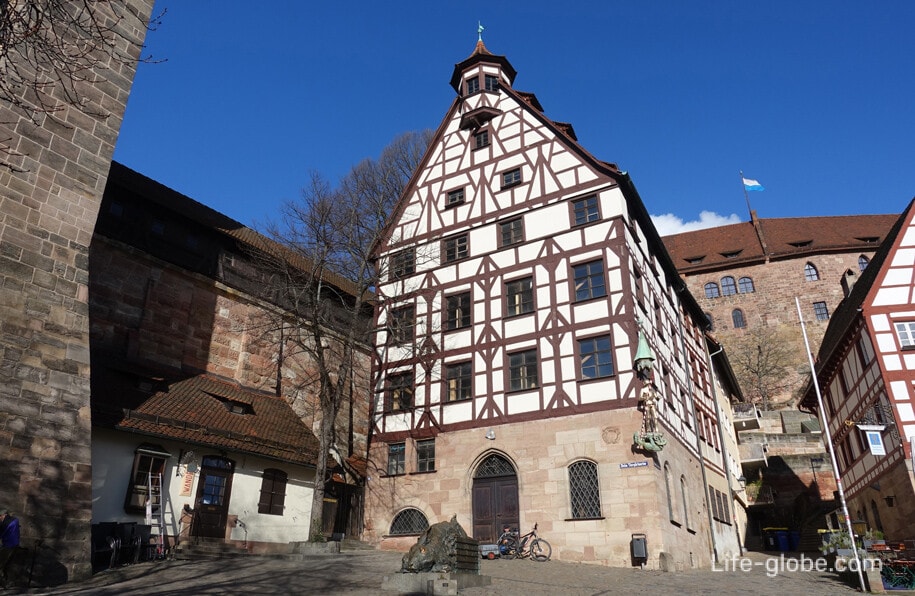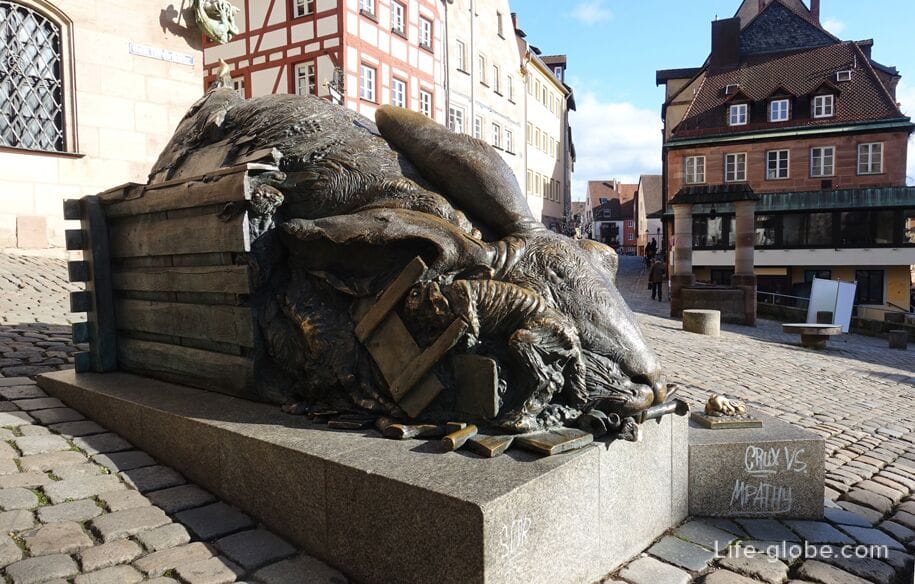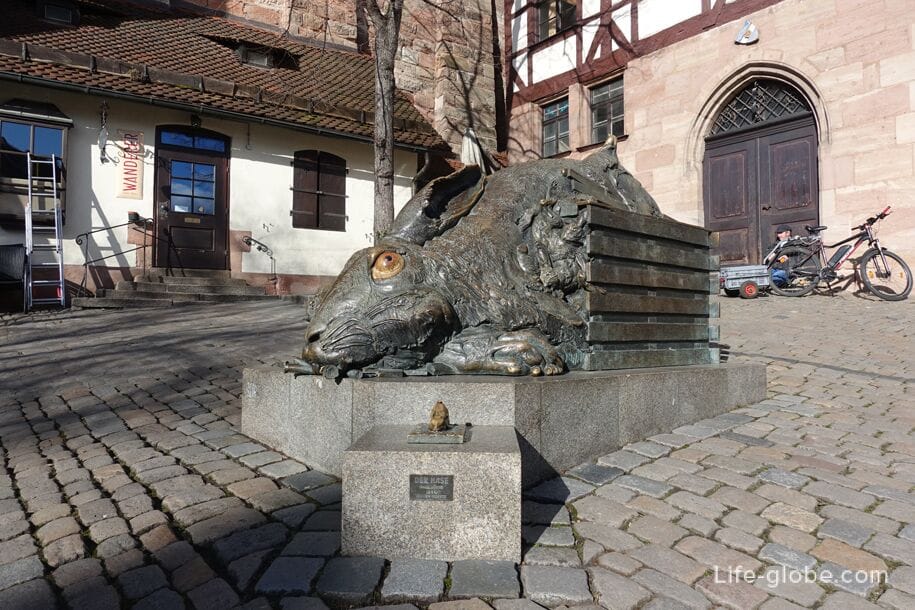
At the north-western outskirts of the historical center of Nuremberg, near the city walls and the house-museum of the famous German artist Albrecht Dürer (Albrecht Dürer), on Tiergärtnertorplatz there is a sculpture in the form of a hare of enormous size.
This sculpture was installed as a tribute to Durer.
The sculpture, bearing the name "Dürer's Hare" (Dürer-Hase Skulptur), was created in 1984 by the German sculptor Juergen Goertz (Juergen Goertz).
Today the sculpture is located near the architectural monument - the house Pilate (Pilatushaus).

In fact, it is a sculptural composition consisting of two separate sculptures:
- in the upper part of the composition, on a pedestal, there is a bronze sculpture of a huge hare, which looks more like a mutant. A hare with dazed eyes gets out of a wooden box and buries under itself, either another hare, or a person;

- on the second, smaller pedestal, there is a bronze sculpture of a small and cute bunny.

This sculpture is designed to perpetuate the memory of Albrecht Durer and pay tribute to the artist.
Why the hare?! As they say, in 1502, Albrecht Durer, walking around the outskirts of Nuremberg, picked up a small lonely hare and brought it to his home. So this bunny stayed to live in the artist's house. Durer made the hare the prototype of his images of the hare. The inhabitants of Nuremberg loved Durer's graphic image "The Hare" (one of the most famous full-scale studies of the artist), made by the artist in 1502, so much that copies of the work decorated many houses of citizens.
The image of two such diverse hares in a sculptural composition tells about the following:
- a small (lower) bunny in the sculpture depicts a pet of the Durer family,
- and the upper mutant hare is a caricature and is designed to remind you of who a person will become and what he will face if he treats the riches of the planet lightly - nature and all the inhabitants of the Earth!

Albrecht Durer lived in the house next to the sculpture from 1509 until his death in 1528.
Today the house houses the Albrecht Durer House Museum. The rooms in the museum reflect the history of the house, as well as the life and work of the artist himself. More about the Albrecht Durer House Museum...

